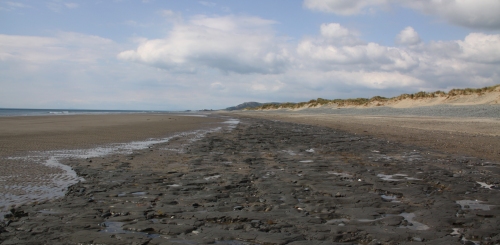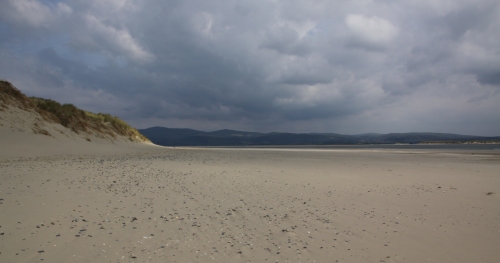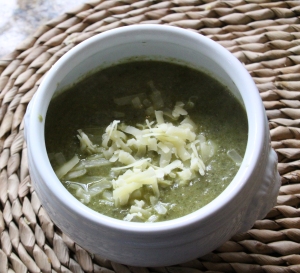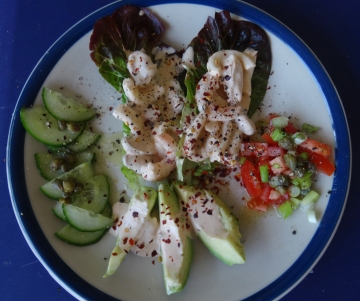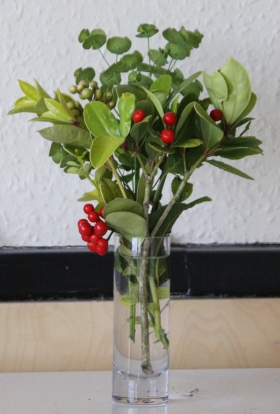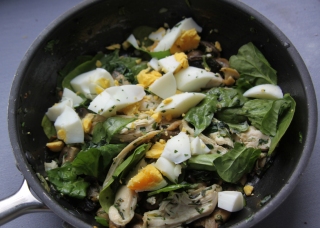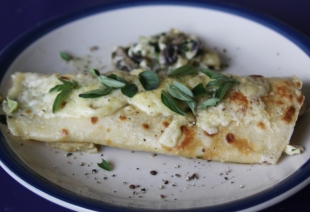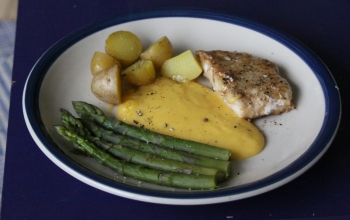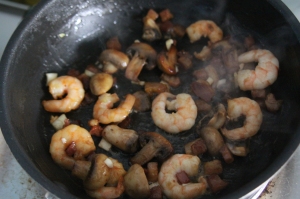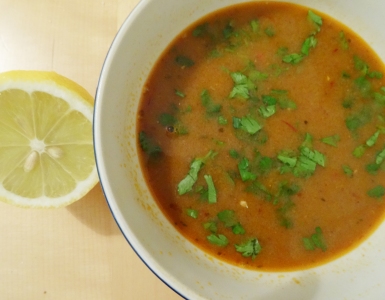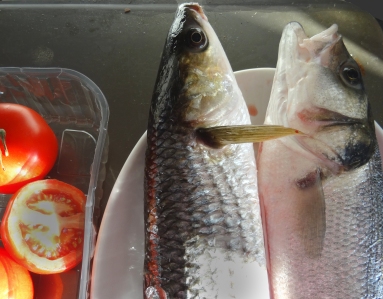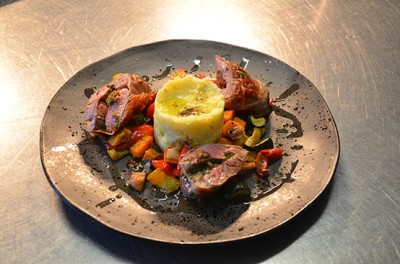 The weather was interesting last week. Wind, rain, a thunder storm and bright sunshine all took their turns. There were some days when I couldn’t wait to be outside, and other days when I didn’t bother unlocking the door.
The weather was interesting last week. Wind, rain, a thunder storm and bright sunshine all took their turns. There were some days when I couldn’t wait to be outside, and other days when I didn’t bother unlocking the door.
Aberdovey continues to be quiet, in spite of the further relaxation of social distancing rules by the English government. I watched the news yesterday morning, and saw people lining up outside Primark in Manchester and Cheshire Oaks outlet centre in Ellesmere Port, all desperate to return to non-essential shopping. The mind boggles. Here’s hoping that the shops are managing social distancing as well as they have promised.
My cooking last week was a mixture of new and old. I did a chicken and leftover veg pie in pastry, which I haven’t done in years as I always find pastry too filling, but I was really in the mood for it. A wonderful piece of lamb shoulder in the freezer was an identical repeat of something I did a couple of weeks ago with a piece of leg of lamb. The huss was full of familiar Middle Eastern flavours, but I had never done it with aubergine before. On Thursday I halved an avocado, had half for lunch instead of my usual slice of toast, and had the other half on Friday evening, followed by pate on toast to make up a full meal. A good mix, nice to have the variety.
Saturday
 One-person chicken and leftover vegetable pie. This pie was brought about by the spontaneous purchase of a roll of puff pastry, and the entire process was entirely ad hoc. It was composed of a chicken breast, sliced runner beans, carrot batons, diced courgette, frozen peas, finely sliced spring onion, spinach, mushrooms, parsley and a chicken and parsley stock, the latter made from bolted parsley and wild fennel stems stems. I fried the chicken and mushrooms, whilst cooking the vegetables lightly in the stock. Then I added the veg to the chicken, scattered some flour over the top and stirred well to mix it in. I then added some stock a little at a time until it formed a sauce. Meanwhile, a small pastry-lined pie dish was blind-baking in the oven, and I had the pastry lid ready to go, brushed with egg.
One-person chicken and leftover vegetable pie. This pie was brought about by the spontaneous purchase of a roll of puff pastry, and the entire process was entirely ad hoc. It was composed of a chicken breast, sliced runner beans, carrot batons, diced courgette, frozen peas, finely sliced spring onion, spinach, mushrooms, parsley and a chicken and parsley stock, the latter made from bolted parsley and wild fennel stems stems. I fried the chicken and mushrooms, whilst cooking the vegetables lightly in the stock. Then I added the veg to the chicken, scattered some flour over the top and stirred well to mix it in. I then added some stock a little at a time until it formed a sauce. Meanwhile, a small pastry-lined pie dish was blind-baking in the oven, and I had the pastry lid ready to go, brushed with egg.
 I almost never eat pastry, so I really enjoyed it, although it wasn’t perfect. I had bought the chicken breasts when the shop had sold out of thighs, and I really noticed the difference. Thighs have much better flavour, and the breasts didn’t impart much flavour to the sauce, so it was a bit bland and I wish I had added more chicken stock to the parsley and wild fennel infusion. I also failed to blind bake the pastry for long enough, so it had a rather soft base. On the other hand, the taste of parsley and fennel that threaded through the pie mix, coming from from the simmered stalks was great. There was plenty of unused pastry and leftover pie mix for the freezer.
I almost never eat pastry, so I really enjoyed it, although it wasn’t perfect. I had bought the chicken breasts when the shop had sold out of thighs, and I really noticed the difference. Thighs have much better flavour, and the breasts didn’t impart much flavour to the sauce, so it was a bit bland and I wish I had added more chicken stock to the parsley and wild fennel infusion. I also failed to blind bake the pastry for long enough, so it had a rather soft base. On the other hand, the taste of parsley and fennel that threaded through the pie mix, coming from from the simmered stalks was great. There was plenty of unused pastry and leftover pie mix for the freezer.
Sunday
 Roasted lamb shoulder with the usual trimmings. I have cooked a couple of other roast lamb joints since the lockdown, and this was no different, and just as enjoyable. This was spring lamb, with the bone in. Spring lamb never has a huge amount of flavour but with the flavour from the bone, and studded with thyme, garlic and rosemary it was given every chance to shine and was delicately delicious. Being shoulder, it required a longer, slower cook than a similarly sized leg would have done, but was still gorgeously moist, just pink at the bone but crispy on the outside. The trick is to either brown it in the oven on a high heat first, or brown it in a pan before placing it in the oven and then cover it with foil for the rest of its cooking time.
Roasted lamb shoulder with the usual trimmings. I have cooked a couple of other roast lamb joints since the lockdown, and this was no different, and just as enjoyable. This was spring lamb, with the bone in. Spring lamb never has a huge amount of flavour but with the flavour from the bone, and studded with thyme, garlic and rosemary it was given every chance to shine and was delicately delicious. Being shoulder, it required a longer, slower cook than a similarly sized leg would have done, but was still gorgeously moist, just pink at the bone but crispy on the outside. The trick is to either brown it in the oven on a high heat first, or brown it in a pan before placing it in the oven and then cover it with foil for the rest of its cooking time.
 After scoring the layer of fat on top and studding it with the garlic and herbs, I dotted it with butter to help it along, and browned it in a pre-heated oven on high for 10 minutes and then cooked it on gas mark 3 for an hour, which was perfect. It was very tender and the delicacy of the flavour went beautifully with a light rosemary gravy, a mint and caper sauce and the steamed sweetheart cabbage and runner beans. The carrot and swede mash was as good as usual. I had leftover gravy in the freezer from my last foray, and combined this with the juices that accumulated during roasting, and drained off the fat from the gravy before serving.
After scoring the layer of fat on top and studding it with the garlic and herbs, I dotted it with butter to help it along, and browned it in a pre-heated oven on high for 10 minutes and then cooked it on gas mark 3 for an hour, which was perfect. It was very tender and the delicacy of the flavour went beautifully with a light rosemary gravy, a mint and caper sauce and the steamed sweetheart cabbage and runner beans. The carrot and swede mash was as good as usual. I had leftover gravy in the freezer from my last foray, and combined this with the juices that accumulated during roasting, and drained off the fat from the gravy before serving.
There was plenty of lamb left over to serve cold or freeze down, half of the carrot and swede mash to freeze down, and more gravy to go into the freezer.
Monday
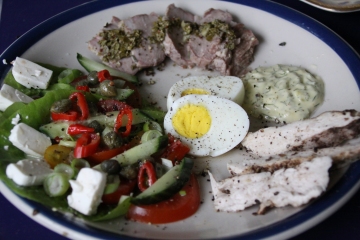 Cold meat and salad. My family always call this “cold plate.” Sometimes it consisted of Spanish, German and Italian sliced meats with salad, and at others it was leftovers. On this occasion I had some leftover lamb from the roast, and leftover chicken breast from the pack of two that I had used for the chicken pie. I marinated the chicken in sumac, zatar, olive oil and lemon juice and lobbed it on the griddle for a few minutes each side. I had been walking in the dunes with my friend Caroline (maintaining a rigid six ft distance at all times) and had picked some wild fennel, so I made a wild fennel mayonnaise. I have a tiny food processor that I use for making mayonnaise, with a hole in its lid. I finely-chopped the fennel fronds by hand and added them to the processor with a dollop of mustard, a serious squeeze of lemon juice, a little vinegar, some sea salt and an egg yolk. Then, whizzing, I fed light olive oil very slowly through the hole in the top and whizzed it until the mix had emulsified into mayonnaise. The salad was much simpler than usual, without herbs, consisting of some super little gem leaves from my father’s garden, cucumber, tomato, spring onions, capers, chilli slices, feta and vinaigrette. I don’t know how I forgot the fresh herbs, but it was good even without them. To finish it off, I sliced some lamb and chicken and added them to the plate. I drizzled some leftover mint sauce over the lamb, and put a good dollop of mayonnaise next to the chicken and egg. Super, and seriously filling.
Cold meat and salad. My family always call this “cold plate.” Sometimes it consisted of Spanish, German and Italian sliced meats with salad, and at others it was leftovers. On this occasion I had some leftover lamb from the roast, and leftover chicken breast from the pack of two that I had used for the chicken pie. I marinated the chicken in sumac, zatar, olive oil and lemon juice and lobbed it on the griddle for a few minutes each side. I had been walking in the dunes with my friend Caroline (maintaining a rigid six ft distance at all times) and had picked some wild fennel, so I made a wild fennel mayonnaise. I have a tiny food processor that I use for making mayonnaise, with a hole in its lid. I finely-chopped the fennel fronds by hand and added them to the processor with a dollop of mustard, a serious squeeze of lemon juice, a little vinegar, some sea salt and an egg yolk. Then, whizzing, I fed light olive oil very slowly through the hole in the top and whizzed it until the mix had emulsified into mayonnaise. The salad was much simpler than usual, without herbs, consisting of some super little gem leaves from my father’s garden, cucumber, tomato, spring onions, capers, chilli slices, feta and vinaigrette. I don’t know how I forgot the fresh herbs, but it was good even without them. To finish it off, I sliced some lamb and chicken and added them to the plate. I drizzled some leftover mint sauce over the lamb, and put a good dollop of mayonnaise next to the chicken and egg. Super, and seriously filling.
Tuesday
 Huss, seafood, baby aubergine, olives and feta in tomato, spinach and herbs, served with salad. Huss is a lovely fish, with a no-fuss central bone. It is a beast to fillet the fish when raw, and quite frankly, why bother? It detaches from the single central bone so easily when it is cooked. So I usually chop it into chunks with a very sharp knife, with the bone left it. My piece was about six inches long so I chopped it into four and cooked it in the sauce with the bone in, removing the skin before serving. I had some baby aubergines, and that seemed like a good excuse for giving the huss a Middle Eastern lilt.
Huss, seafood, baby aubergine, olives and feta in tomato, spinach and herbs, served with salad. Huss is a lovely fish, with a no-fuss central bone. It is a beast to fillet the fish when raw, and quite frankly, why bother? It detaches from the single central bone so easily when it is cooked. So I usually chop it into chunks with a very sharp knife, with the bone left it. My piece was about six inches long so I chopped it into four and cooked it in the sauce with the bone in, removing the skin before serving. I had some baby aubergines, and that seemed like a good excuse for giving the huss a Middle Eastern lilt.
 I set the slow cooker to auto, which on this machine means it starts out hot for a while and then drops to low. I had some mashed up tomatoes in the freezer, so fried some finely chopped onions, sliced red chilli and garlic, added the tomatoes, and stirred in some smoked paprika and when it was all heated through, put it into the slow cooker, with some dehydrated limes, and poured over a little stock before adding the fried huss. Chopped salted anchovies (for richness rather than flavour), and some sun-dried tomato pesto also went in.
I set the slow cooker to auto, which on this machine means it starts out hot for a while and then drops to low. I had some mashed up tomatoes in the freezer, so fried some finely chopped onions, sliced red chilli and garlic, added the tomatoes, and stirred in some smoked paprika and when it was all heated through, put it into the slow cooker, with some dehydrated limes, and poured over a little stock before adding the fried huss. Chopped salted anchovies (for richness rather than flavour), and some sun-dried tomato pesto also went in.
An hour before serving, with the slow cooker now on low, I put in a couple of handfuls of spinach. 15 minutes before serving I griddled some halved baby aubergines, and put those and some black olives, some whole mint leaves and a small handful of oregano leaves in to the sauce. Fifteen minutes later it was ready to serve with some chunks of feta and accompanied by a small side salad.
There was plenty left over to form a base for a Middle Eastern flavoured seafood stew, and it is ready and waiting in the freezer.
Wednesday
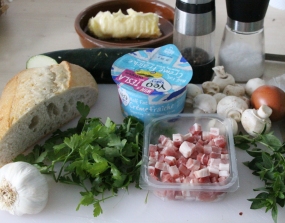 Garlic mushrooms, pancetta and courgette on toast, topped with a poached egg. Mushrooms and garlic are a classic combination. Some diced courgette rounds it off beautifully. The mushrooms and courgettes are fried in butter until beginning to brown. The finely chopped garlic is added, and when cooked through, some flour is sprinkled over the top and stirred into the mixture until it is invisible. This will help to thicken the stock. At this point, a little stock goes in, accompanied by finely sliced spring onions, chopped parsley and oregano and a few turns of the pepper mill. I also like to add a slosh of sherry at this stage. Mushrooms and sherry are a frequent combination in Spanish cooking, and work deliciously together.
Garlic mushrooms, pancetta and courgette on toast, topped with a poached egg. Mushrooms and garlic are a classic combination. Some diced courgette rounds it off beautifully. The mushrooms and courgettes are fried in butter until beginning to brown. The finely chopped garlic is added, and when cooked through, some flour is sprinkled over the top and stirred into the mixture until it is invisible. This will help to thicken the stock. At this point, a little stock goes in, accompanied by finely sliced spring onions, chopped parsley and oregano and a few turns of the pepper mill. I also like to add a slosh of sherry at this stage. Mushrooms and sherry are a frequent combination in Spanish cooking, and work deliciously together.
You need enough stock to deglaze the pan, cook the ingredients through. It is better to go with a little and keep adding it, so that when it is ready to serve it is well reduced but still liquid enough to serves as a sauce. Whilst this is gently heating through, the egg is poached and the slice of rustic bread or sourdough griddled or toasted. At the last minute, a small dollop of whatever cream you have to hand goes in to the mushroom mix, is heated through gently, and then the mushroom mix goes on top of the toast and the poached egg is placed carefully on top of the mushrooms. Sea salt scattered over the top of it all, and another turn of the pepper mill over the egg finishes it off.
 Lots of alternatives are possible. If you have access to wild mushrooms, that makes it even better, but I used supermarket button mushrooms and that was fine. Instead of sherry, Marsala wine, which is utterly divine in all sorts of sauces, is excellent with this dish. It is not always easy to get hold of, and must be used with care or it takes over entirely. If you don’t fancy toast as a base, you could cook a big mound of spinach separately and serve the mushrooms on top of the spinach – or courgette ribbons. If you fancy something more substantial, you could add handfuls of spinach, which I usually do, or for bigger appetites it could be served alongside chicken, gammon or pork, or over pasta
Lots of alternatives are possible. If you have access to wild mushrooms, that makes it even better, but I used supermarket button mushrooms and that was fine. Instead of sherry, Marsala wine, which is utterly divine in all sorts of sauces, is excellent with this dish. It is not always easy to get hold of, and must be used with care or it takes over entirely. If you don’t fancy toast as a base, you could cook a big mound of spinach separately and serve the mushrooms on top of the spinach – or courgette ribbons. If you fancy something more substantial, you could add handfuls of spinach, which I usually do, or for bigger appetites it could be served alongside chicken, gammon or pork, or over pasta
However you do it, it’s incredibly filling, so I don’t serve it with anything else.
Thursday
 Slow-cooked chilli con carne with black beans, rice and sour cream. A few weeks ago I cooked a huge batch and put a couple of portions in the freezer. This is one of those portions. It was a simply recipe. Finely chopped onion, sliced chillis and finely chopped garlic are fried until translucent and just beginning to brown. The following are then added: cayenne, smoked paprika, ground cumin, ground coriander, a good sprinkle of dried coriander, some fennel seeds, a fresh or dried bay leaf and either some cinnamon or a piece of cassia bark (the latter my preference) and some dehydrated lemon slices. Once heated through they are removed to the slow cooker. The beef chunks are fried on high heat until browned all over, flour is sprinkled over the beef, given a good stir to coat, then added into the slow cooker, and given a good stir to mix with the other ingredients. Peeled and chopped tomato are added together with some beef stock to cover, and the whole lot is left to its own devices for several hours for the chuck steak to tenderize and the spices to blend. Kidney beans are more traditional, but I love the flavour of the black bean, and the ebony shine looks wonderful against the reddish mixture and the green of the coriander (or parsley if coriander is unavailable). I served it with plain boiled rice and chives, and a heavenly dollop of sour cream.
Slow-cooked chilli con carne with black beans, rice and sour cream. A few weeks ago I cooked a huge batch and put a couple of portions in the freezer. This is one of those portions. It was a simply recipe. Finely chopped onion, sliced chillis and finely chopped garlic are fried until translucent and just beginning to brown. The following are then added: cayenne, smoked paprika, ground cumin, ground coriander, a good sprinkle of dried coriander, some fennel seeds, a fresh or dried bay leaf and either some cinnamon or a piece of cassia bark (the latter my preference) and some dehydrated lemon slices. Once heated through they are removed to the slow cooker. The beef chunks are fried on high heat until browned all over, flour is sprinkled over the beef, given a good stir to coat, then added into the slow cooker, and given a good stir to mix with the other ingredients. Peeled and chopped tomato are added together with some beef stock to cover, and the whole lot is left to its own devices for several hours for the chuck steak to tenderize and the spices to blend. Kidney beans are more traditional, but I love the flavour of the black bean, and the ebony shine looks wonderful against the reddish mixture and the green of the coriander (or parsley if coriander is unavailable). I served it with plain boiled rice and chives, and a heavenly dollop of sour cream.
Friday
 Avocado with vinaigrette followed by smoked mackerel pate on toast. For the avocado I simply made a vinaigrette (three parts good olive oil to one part white wine vinegar, German mustard although Dijon works just as well, a crushed garlic clove, black pepper and sea salt), gave it a good shake and poured it into the cavity left by the stone. A perfectly ripe avocado is a beautiful thing, quite unlike anything else, and softly luscious.
Avocado with vinaigrette followed by smoked mackerel pate on toast. For the avocado I simply made a vinaigrette (three parts good olive oil to one part white wine vinegar, German mustard although Dijon works just as well, a crushed garlic clove, black pepper and sea salt), gave it a good shake and poured it into the cavity left by the stone. A perfectly ripe avocado is a beautiful thing, quite unlike anything else, and softly luscious.
By contrast, the toasted white cob was crispy, and the home made smoked mackerel pate had a spicy edge. The recipe is my mother’s. The smoked mackerel is skinned and then mashed with a fork. Soft butter is mashed into it, again with a fork, and herbs and spices are added: fresh thyme or sage (I used thyme), cayenne for heat and Tabasco if the cayenne isn’t hot enough, ground cumin, garam masala, a little white wine vinegar, quite a bit of lemon juice and freshly ground pepper and sea/rock salt. The vinegar and lemon juice not only add flavour of their own but also bring out the other flavours. Fresh thyme, sage or oregano sprinkled over the top and a good squeeze of lemon juice complete the flavour sensation.
Conclusions
I haven’t much to add, this week, except that it was nice to have a few dishes that I haven’t had in a while, and that being able to eat excellent quality fish once more is a delight. A real treat was a salted caramel ice cream from the The Sweet Shop on the sea front, and another was being able to pick wild fennel, which I used in all the stock that I made. A bit of variety is always seriously welcome.

Wild fennel growing in the sand dunes. The stalks are great for making stock, and the fronds go well in salad, sprinkled over fish and incorporated into mayonnaise.










